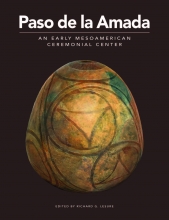Analysis of the materials took place between 1990 and 2017. Study of pottery was advanced to different levels for different proveniences. The levels are identified in Table 2.2. Level A involved the most detailed analyses of pottery. Rim sherds were individually recorded, including variables such as rim diameter and wall thickness. In addition, notes were recorded on significant body sherds (bases, decoration, vessel supports, etc.). Level B involved classification of rim sherds to type and form, the latter using the detailed set of codes presented in Chapter 8 (see Figure 8.1). Level C involved classification of rim sherds to type and an abbreviated set of form codes. Level D involved simply counting and weighing the sherds. The intent was for all units to be analyzed at least to Level D. However, the sherds from some units of the platform fill at Mound 1 were weighed but not counted. Level E is used to designate analysis that was restricted to weighing of sherds.
Missing data affect the analysis of some proveniences. Errors in the initial processing of artifacts from Mound 1 in the field laboratory led to loss of provenience information for 15 proveniences, mostly from the platform fill. Lab procedures were subsequently improved, and we did not encounter this problem again. None of the affected proveniences is included among the refuse samples used for analysis. Other instances of missing data involve specific classes of information from particular units. From several of the test pit excavations in 1990, we are missing some information, most distressingly the counts and weights of sherds from Test Pit 29, which yielded one of our Cherla refuse samples. (An estimate of the original weight of sherds from Level 6 and Feature 1 of Pit 29 has been used in analyses for this volume; see the discussion of that excavation in Chapter 6.) We appear to be missing a page from the record of fire-cracked rock and daub from Mound 1. Lots 9 and 10 from various grid units are affected. Stone tool data of various kinds are likewise missing from a few provenience units. Information on animal bone is uneven because of differential preservation and incomplete study of the collection. In the analyses in this volume, these instances of missing data are taken into consideration where possible and relevant, on a case-by-case basis.
